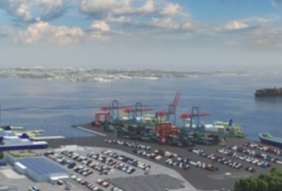
Posted on March 8, 2016
The Port of Gothenburg in Sweden has announced its plan to build a new freight terminal at the outer port area on the Hisingen side of the river, at the estuary of the Göta Älv.
The expansion project, listed as the largest expansion project at the port since the 1970s, will involve the construction of a terminal spanning across a length of 220,000m² and will utilise an amalgamation of dredging surplus, from the maintenance dredging site in the port area, with cement.
Approved by the Land and Environment Court, the new terminal can cater to vessels of a maximum draught of 11m.
However, the types of containers and goods such as trailers and cars, passenger traffic or a combination of several types of freight, which are to be handled by the terminal, is still subject to speculation.
The traffic calling at the new terminal is said to be in the form of intra-European freight transport, serving as a final port of call or as a transit passage to the major transshipment hubs in northern Germany, the Netherlands and Belgium for onward movement to various parts of the world.
Port of Gothenburg chief executive Magnus Kårestedt said: “We have already noted an increase in demand from the market.
“There is also a political ambition in Europe to switch more and more transport from land to sea in order to alleviate pressure on the roads and mitigate environmental impact.”
The building of the new terminal is said to address the increased demand for sea transport via the Port of Gothenburg.
The terminal will be maintained by an external operator who is yet to be chosen.
Following the building of the terminal, the authority will re-plant eelgrass, which acts as nursery for several species of fish, to preserve the flora of the marine ecosystem.
The construction of the terminal is scheduled to commence next year and is expected to complete after 2020.
The expansion project of the Port of Gothenburg is said to involve an investment of SEK1bn ($117.2m).





